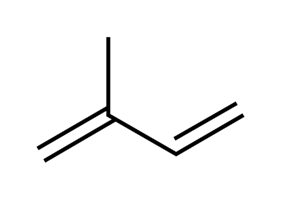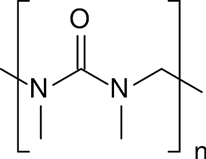Match materials given in Column I with the polymers given in Column II.
(i) Natural rubber latex – (f) cis-polyisoprene
As we have discussed earlier that natural rubber consists of a linear polymer of 2-methyl-1,3-butadiene which is commonly known as isoprene. It is also called cis-1,4-polyisoprene or simply cis-polyisoprene.

Isoprene

(ii) Wood laminates – (e) Urea-formaldehyde resin
When we look at the properties of the urea formaldehyde resin, we get to know that they have high tensile strength, high reactivity, low water absorption. Due to these features they are used as adhesive resins for wood laminates.

Urea-Formaldehyde resin
(iii) Ropes and fibres – (a) Nylon
We know that Due to the ability to carry heavy weights along with that Nylon ropes can return to its original shape even after stretching due to its high elasticity. It is also capable of withstanding sudden shocks. Due to these features they are used as ropes and fibres.
(iv) Polyester fabric – (c) Dacron
We know that Dacron is polyester. It is used in making wash and wear fabrics due to its resistance to chemical and biological substances and also to abrasion. Terylene or Dacron is the trade name given.
(v) Synthetic rubber – (b) Neoprene
Neoprene or polychloroprene is an example of synthetic rubber. It provides high resistance to vegetable and mineral oils.
(vi) Unbreakable crockery – (d) Melamine formaldehyde resins
We know that melamine polymers are quite hard. So they are used in making plastic crockery and these articles do not break even if they are dropped.